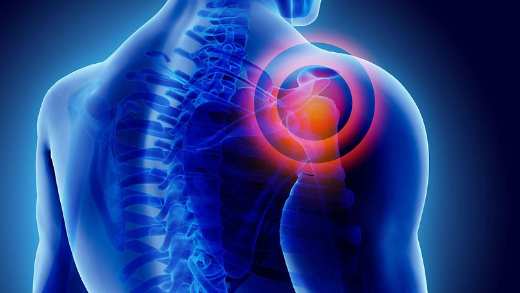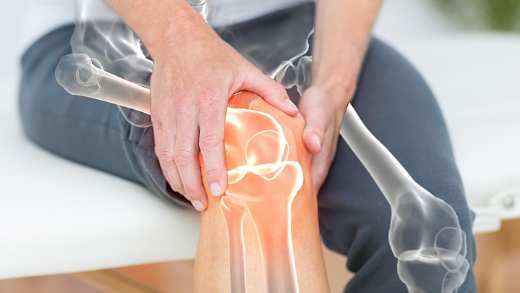There are some simple ways to help calm your lower or mid-upper back in the early stages of a new ache or pain. It’s also important to know that aches and pains are normal and most of the time don't mean we've damaged our body.
IPRS Health, a provider of Occupational Health and Rehabilitation services, believe that knowing the facts can help you to recover more quickly. They've provided some advice on how to help reduce new back pain.
IPRS Health advises seeking clinical advice for undiagnosed back pain, as it may not always stem from musculoskeletal issues. Other conditions can coexist with musculoskeletal issues and benefit from timely medical attention.
What's making your pain worse?
If you can pinpoint what activities or positions are causing your pain to be worse, it's a good idea to stop or reduce them for a short period. Your work may involve heavy lifting which has become painful. You may have pain when sitting for long periods. Reducing the aggravating activities can allow your pain to calm down.

Have you been overdoing it?
If you’ve been doing more activity than normal, now's a good time to reflect on the level of recovery you’re giving your body. Recovery and sleep are just as important as the activity itself, so try and get the balance right for you. If you’ve been lifting heavy items or exercising, check you’re using the right techniques and if not, seek advice on correcting this.
Have you been underdoing it?
We can develop aches and pains because we’ve become less active than we need to be. Sometimes the pain is a signal for us to move and use our body more. If you think this is the case for you, find ways to gently build up your activity levels as this is likely to help with your pain.
Tips to help reduce new back pain
Simple pain relief
Using basic pain medication can help calm down your back pain. Speak to your local pharmacist for advice on the right medication for you.
Heat or cold
Try applying either some heat, such as a hot bath, shower or a heatable wheat bag, or apply something cold to the area that hurts. People normally find that one works better than the other. Use whichever one works best for you.
Stay active
Try and find ways to stay active without making your pain worse. With lower back pain you may want to do some light walking if this feels comfortable. Mid-upper back pain is unlikely to stop you from going for walks or other light activities that you do.
Exercise
It’s important to keep your back moving and there are some exercises at the end of this article that people find helpful to complete in the early stages of having back pain. Exercises should be gradually eased into, avoiding any that cause long-lasting increases in pain.
More ways to help with your pain
After following the advice above, it’s important to continue to care for your back, below are 5 steps that can help.
Step 1: Moderate or higher intensity exercise
Try to aim for 150 minutes of moderate exercise a week like golf, fast walking or cycling, or 75 minutes of higher intensity exercise like running or tennis. Weight training can also help strengthen your body.
Step 2: Sit less
Studies have shown that sitting for long periods is not only linked with an increased risk of type 2 diabetes and some types of cancer, but also affects metabolism of fat and may cause weaker muscles and bones.Footnote [1]
Step 3: Get medical advice
Expert advice from physiotherapists or other medical professionals can help you understand and alleviate your pain.
Step 4: Reduce stress
Whether it’s from work, anxiety at home or reduced activities because of your discomfort, stress can add to lower back pain. Mindfulness and meditation can be beneficial and goal setting is another useful technique which can help.Footnote [2]
Step 5: Eat and sleep well
Healthy eating is good for the body. The closer we are to our ideal weight, the less stress we're putting through our lower back. Good sleep helps because sleep is where we maximise our tissue healing. If you're not sleeping, you're not helping.
IPRS Health recommends that if you develop any new or worsening symptoms, or if your pain does not start to calm down within 2-4 weeks, seek medical advice.
Below are some examples of exercises found helpful by physiotherapy patients with new back pain, to regain confidence in moving their lower and mid-upper back.
This content and the videos below are provided solely by IPRS Health. Although IPRS Health is a health and wellbeing company, the information contained within these articles and videos does not represent any form of assessment, diagnosis, or treatment by IPRS Health for a medical condition. Any exercise-based content is not specific or prescribed by IPRS Health for your medical condition. If you follow any exercise programme or advice contained within these articles and videos, you do so at your own risk and IPRS Health have no liability for any subsequent damage, loss, or injury. IPRS Health recommend that you seek advice from a physiotherapist or healthcare professional before starting any new exercise regime. If you are experiencing back pain or discomfort, please seek medical advice in the first instance.
















